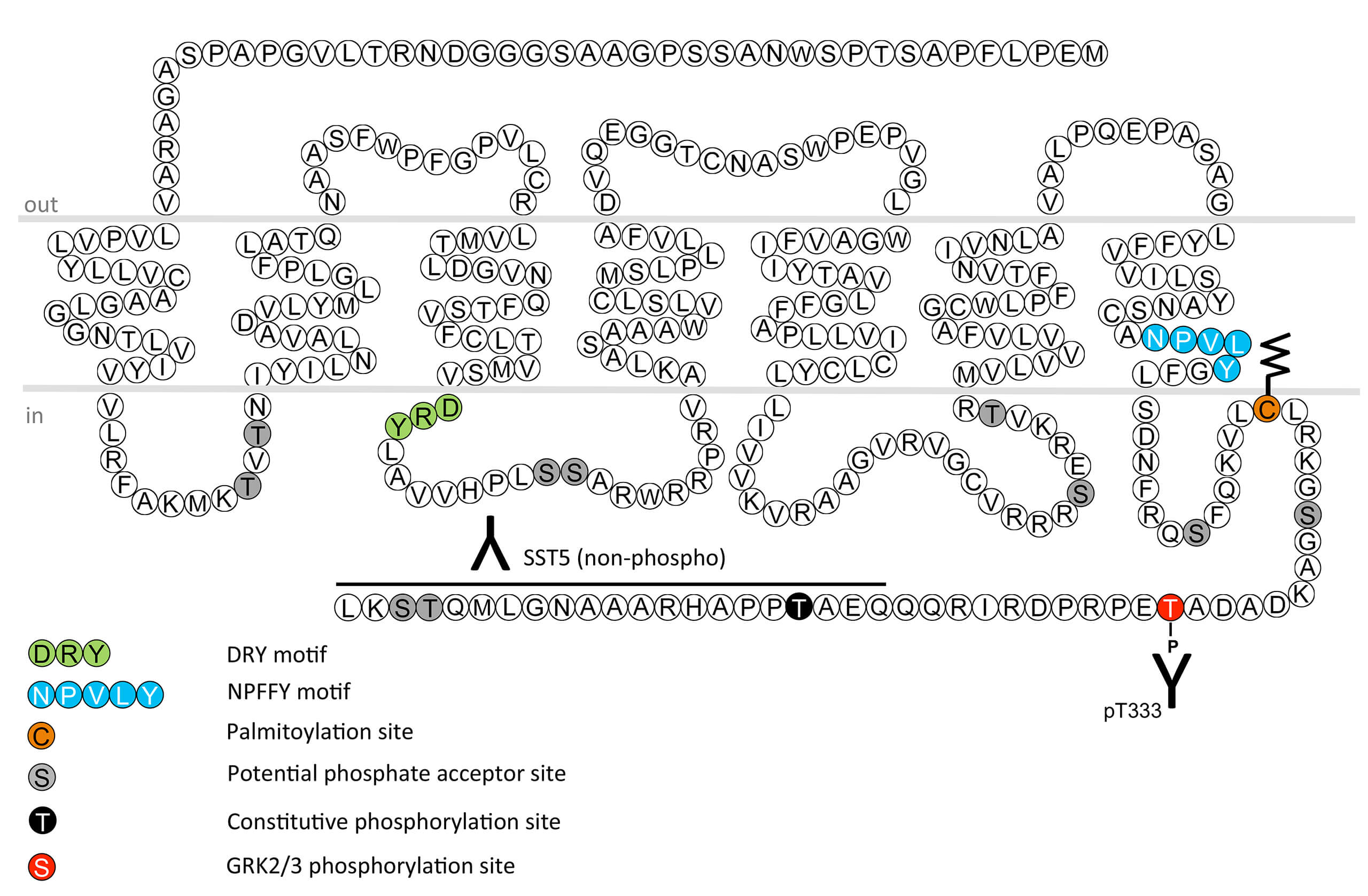Somatostatin Receptor 5 Antibodies

The somatostatin receptor 5 (SST5) is highly expressed in the anterior pituitary and other endocrine cells, where it inhibits hormone secretion. It is the primary target for pasireotide (Signifor) which is the first line medical treatment for adrenocorticotropic hormone (ACTH)-producing adenomas (Cushing’s disease). SST5 desensitization and internalization are regulated by phosphorylation of carboxyl-terminal threonine333 (pT333-SST5). Threonine347 is constitutively phosphorylated in the absence of agonist. This nomenclature refers to the human SST5. Agonist-induced phosphorylation of T333 is mediated by GRK2. SST5 dephosphorylation is primarily mediated by protein phosphatase 1 gamma (PP1γ). For more information on SST5 pharmacology please refer to the IUPHAR database. For further reading refer to:
Petrich A, Mann A, Kliewer A, Nagel F, Strigli A, Märtens JC, Pöll F, Schulz S. Phosphorylation of threonine 333 regulates trafficking of the human sst5 somatostatin receptor. Mol Endocrinol. 2013 Apr;27(4):671-82. doi: 10.1210/me.2012-1329. Epub 2013 Feb 15. PubMed PMID: 23418396; PubMed Central PMCID: PMC5416807.
Lehmann A, Kliewer A, Märtens JC, Nagel F, Schulz S. Carboxyl-terminal receptor domains control the differential dephosphorylation of somatostatin receptors by protein phosphatase 1 isoforms. PLoS One. 2014 Mar 17;9(3):e91526. doi: 10.1371/journal.pone.0091526. eCollection 2014. PubMed PMID: 24637622; PubMed Central PMCID: PMC3956607.
Kliewer A, Mann A, Petrich A, Pöll F, Schulz S. A transplantable phosphorylation probe for direct assessment of G protein-coupled receptor activation. PLoS One. 2012;7(6):e39458. doi: 10.1371/journal.pone.0039458. Epub 2012 Jun 26. PubMed PMID: 22745760; PubMed Central PMCID: PMC3383726.
 pT333-SST5 Phosphorylation Assay Kit
pT333-SST5 Phosphorylation Assay Kit 

